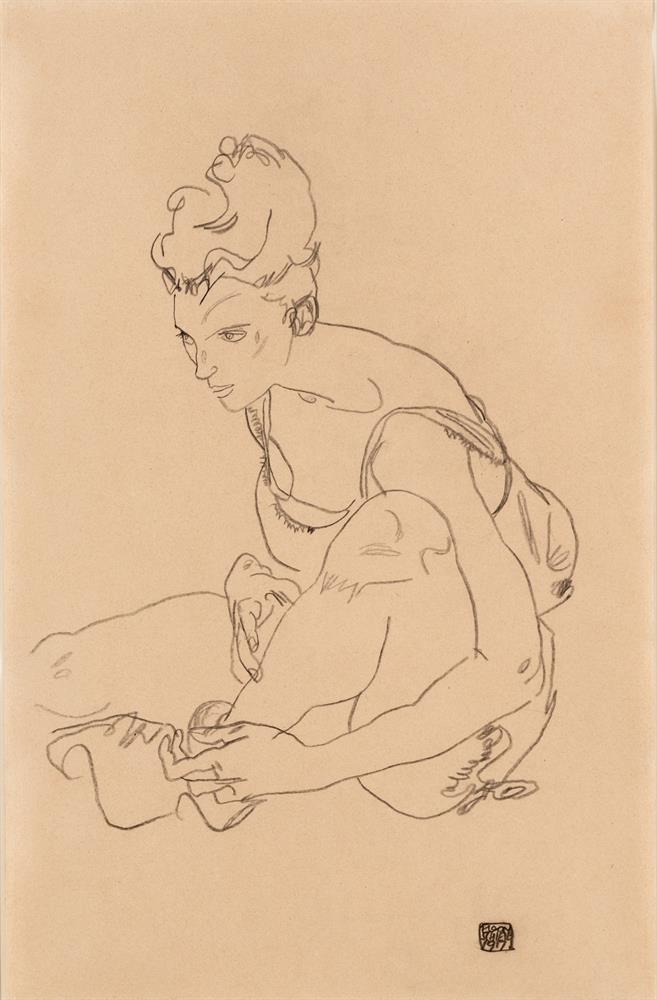
Tulln 1890 - 1918 Vienna
Seated Woman
Pencil on paper
45.9 x 29.4 cm
Signed and dated lower right: EGON / SCHIELE / 1917
Kallir WV no. 1999
Provenienz:
Private collection Bunzl, Vienna and London
(possibly acquired directly from the artist)
Liesl Bunzl Collection, Vienna and London (by descent from her aunt)
passed on in the family
Literatur:
Jane Kallir, Egon Schiele: The Complete Works, Expanded edition, New York 1998, ill. p. 582, no. 1999
Just a few days after marrying Edith Harms in June 1915, Schiele reported for basic training in the Austro-Hungarian Army. For the next year and a half, military obligations often prevented him from pursuing his art. Only in early 1917, after he was transferred back to Vienna from the rural hamlet of Mühling, could he resume an active studio life.
Schiele’s stylistic development between 1915 and 1917 is difficult to chart owing to the relative paucity of works produced in the intervening period. Nevertheless, it seems the artist picked up more or less where he had left off before being inducted. The move toward greater three-dimensional verisimilitude, noted as far back as 1913, became even more pronounced in 1917. Switching from pencil to heavier, darker crayon, the artist was able to capture his subjects in a just a few unbroken strokes. The soft curves of human flesh, stray strands of hair and scanty chemise depicted in Seated Woman are observed with a new attention to realistic detail.
Between his marriage and his return to Vienna, Schiele’s principal model was his wife. Embarrassed to pose naked, Edith Schiele seldom stripped further than her undergarments, and even then, she sometimes asked Egon the disguise her features. Edith continued to model for Egon in 1917, but it can be difficult to distinguish her from the many other models whom the artist employed during this period. Further complicating identification is the fact that Edith’s sister, Adele Harms, also posed for Schiele, and the siblings were quite similar in appearance. The angular face and upswept tresses of Seated Woman are characteristic of a certain female "type" seen in a number of 1917 drawings and watercolors (D. 1977-1980, 1988, 1991-1998). The subjects of these works might be Edith, Adele, or a composite of the two. Whichever sister was depicted, Schiele effectively managed to keep us guessing about her precise identity.
Jane Kallir
